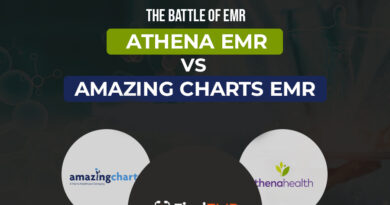How does the US Health Insurance System Work
Us Health Insurance System is structured in an intricate bureaucracy. The majority of hospitals and clinics in the US are owned by private non-profit organizations, in contrast to the rest of the world where healthcare facilities are primarily owned by governments or by businesses from the private sector.

How Does the American Health System Work?
The American healthcare system is structured in an intricate bureaucracy. The majority of hospitals and clinics in the US are owned by private non-profit organizations, in contrast to the rest of the world where healthcare facilities are primarily owned by governments or by businesses from the private sector.
Nevertheless, healthcare spending is highest in the United States of America. While a large portion of these costs are covered by public payers like Federal institutions, State and local governments, or private insurance, they can also be covered by individual payments and private insurance.
In contrast to most developed countries, the US health system does not offer healthcare to all of its citizens. The United States relies heavily on employers who voluntarily offer health insurance coverage to their employees and dependents because there is no single national health insurance system.
Additionally, the government runs programs that typically pay for healthcare costs for the most vulnerable members of society, such as the elderly, the disabled, and the underprivileged. These programs vary from one another and each target a particular group of people.
In the US, obtaining US health insurance system is not simple. Although some people might believe that once you have money, everything is simple, in reality, things are a little more complicated. To choose the appropriate insurance, one must be extremely cautious and vigilant.
Read also
- How to Calculate Mortgage Payments: Step by Step Guidelines
- 10 Best Loans for Students in 2022
- 5 Different Mortgage Loan Options for Home Buyers
- 6 Best Cryptocurrency for Investment in 2022
US Health Insurance System for Non Citizens
US Health insurance is not a requirement for residents of the United States, nor is it provided by the government for all citizens. Although it is optional, it is strongly advised because health services are more expensive than in any other nation in the world.
In the US, there are two varieties of health insurance: private and public. The majority of people combine the two. Medicare, Medicaid, and the Children’s Health Insurance Program are the three public health insurance programs in the US.
- US Public Health Insurance Systems
- US Private Health Insurance Systems
1. Medicare Public Health Insurance
A national health insurance program known as Medicare has been in existence since 1966. It offers health insurance Systems to US citizens over 65 as well as to younger people under 65 who have ALS, end-stage renal disease, and other disabilities.
According to data, nearly 60 million Americans received healthcare through Medicare in 2018, over 51 million of whom were over 65.
The Medicare program is divided into
Part-A — which includes medical facilities, skilled nursing, and hospice care.
Part-B — includes outpatient services, outpatient hospital charges, and some providers’ services while a patient at a hospital.
Part-C — There is a different option known as Managed Medicare, which enables patients to choose health plans with at least the same service coverage as Parts A and B, frequently the benefits of Part D, and an annual out-of-pocket spending cap that A and B lack. Parts A and B must both be signed in order to sign this section.
Part-D — mainly self-administered prescription medications.
Medicaid
Medicaid is a joint federal-state program that assists those with low incomes and resources in paying for medical expenses while providing services like nursing home care and personal care that are typically not covered by Medicare.
For Americans with low incomes, it is the main source of funding for medical and health-related services. According to data, the US provided health insurance to 71 million low-income or disabled people, or 23% of the country’s total population.
Children Health Insurance Program
This program, formerly known as the State Children’s Health Insurance Program (SCHIP), provides health insurance to children from modestly-income families who do not meet Medicaid eligibility requirements.
The Affordable Care Act — Obamacare
President Obama signed the Patient Protection and Affordable Care Act into law, which made health insurance a requirement for all citizens or they would face penalties. The Act, which was created to lower health care costs and improve healthcare for Americans, provides subsidies for low-income families by taxing healthcare providers and high-income families.
In an effort to get younger, healthier people to pay premiums, the Affordable Care Act allowed parents to add their children up to the age of 26 to their policies. It also made it possible for those in poverty to receive treatment for chronic illnesses rather than going to the emergency room.
US Private Health Insurance
In the US, there are about a thousand private health insurance system companies, each of which offers a variety of plans at various price points that are largely influenced by a person’s medical background. While there are individual plans that only cover one person, there are also group plans that focus specifically on families.
In the United States, there are typically three different types of health insurance:
Traditional Fee-for-service health Insurance Plans
which plans are typically the most expensive, making them difficult for people whose incomes are below the US average to purchase. These are the best plans, though, as they give you the most flexibility.
Health Maintenance Organizations (HMOs)
which provides a constrained selection of healthcare providers, but which also has lower copayments and pays for more preventative care. The National Committee for Quality Assurance rates and approves them.
Preferred Provider Organization (PPOs)
which, like HMOs, offer lower co-payments, but they give you more freedom in choosing a doctor because they provide you with a list of them.
How to Select a Good US Health Insurance Plan
Make sure to ask questions like these when looking for a good health insurance plan:
- Does that plan give you the freedom to visit any physician, facility, clinic, or pharmacy of your choice?
- Are specialists like dentists and eye doctors covered?
- Does the plan provide coverage for unique ailments or therapies like pregnancy, psychiatric treatment, or physical therapy?
- Does the plan pay for any potential doctor-prescribed medications as well as care in nursing homes or at home?
- Which deductibles apply? Do you require a co-payment?
- How much of my own money will I have to spend on expenses in total?
As some plans may require you to have a third party decide how to resolve the issue, be sure you are aware of how your provider will handle a dispute regarding a bill or service. The GeoBlue Xplorer plan is what we advise foreigners visiting the US to purchase.
US Health Insurance Requirements for for Visitors
Although short-term visitors to the United States with B-1/B-2 visas are not required to have health insurance. It is strongly advised that everyone travel with insurance before entering the country.
The main justification for getting insurance is the high cost of healthcare in the US; even a check-up for a minor headache will set you back hundreds of dollars, while a broken limb will set you back thousands.
Since health incidents are never anticipated, it is best to be prepared and obtain insurance so that you can save money if necessary.
Health Insurance Options for Legal Immigrants
It is possible for immigrants to purchase private health insurance in the US. If they are lawfully present in the country. Additionally, based on your income, lawful immigrants may also be eligible for lower monthly premiums and lower out-of-pocket expenses, as follows:
- Those with annual incomes at or below 400 percent of the federal poverty level may qualify for premium tax credits and other discounts on insurance through the Marketplace.
- Those who meet all other eligibility requirements but have annual household incomes below the federal poverty level and are not otherwise eligible for Medicaid are eligible for premium tax credits and other discounts on Marketplace insurance.
As long as they adhere to the state’s residency and income requirements, “qualified non-citizens” are frequently eligible for coverage through Medicaid and the Children’s Health Insurance Program (CHIP).
Qualified non-citizens:
- reputable long-term residents
- Asylees, refugees, battered non-citizens, their spouses, children, or parents, trafficking victims, as well as those who have applied for a victim of trafficking visa in the past
- entries from Haiti and Cuba,
- Those who entered the US on parole for at least a year
- Before 1980, individuals who were granted a stay of removal as well as members of federally recognized Indian tribes or American Indians born in Canada were granted conditional entry.
However, after becoming eligible, the majority of them will have to wait five years in the US before receiving Medicaid and CHIP coverage. Asylees and refugees are not subject to the waiting period.
The 5-year waiting period for children and expectant women to be eligible for Medicare and CHIP may also be eliminated by states.
Here, you can request a free quote for US health insurance. Even though you are free to select the plan that best suits you, we advise the GeoBlue Xplorer.
Options for Illegal Immigrants’ Health Insurance
Since the US government-funded health insurance does not cover illegal immigrants, they can only receive healthcare from private providers.
If the patient is eligible for fee-for-service medical assistance, community centers—also known as Safety Net Providers—can provide medical care to undocumented immigrants in the US.




Pingback: What Role Play for Different Health Issues?